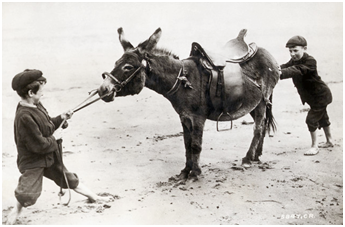Keep On Your Toes with Your Horse

By Carole Herder
I recently came across an Australian horse trainer Warwick Schiller who has some really good videos online: Warwick Schiller YouTube video . They gave me food for thought.
I had been having trouble with one of my horses. He had become very complacent and lazy, or so I thought. Actually, I had become complacent with him and he had become unmotivated with me. I immediately took the next training day as an opportunity to ‘buck things up’. My attitude and intention were different and I could feel my horse perk up instantly. There was no more asking ‘please go that way, when you are ready’. It was more like ‘that way, now please’ – and if you don’t go I will assertively (not aggressively) encourage you until you do!
After my initial warm up exercises on the ground (and having him almost jump into action using my new attitude), I decided to see how connected he still was with me. With rope in hand, I took off striding in one direction and fair enough, he managed to keep up with me. I turned left and he stayed with me, I turned right and I felt a slight tension on the rope. I did an about turn and BUMP, the rope went tight as he decided not to follow me. I bumped him again and he trotted up behind me. This scenario repeated itself two more times and then, within three or four minutes, I could turn, stop, jog, turn, circle and he was right with me. And I can tell you this, it made a massive difference when I got up to ride him! MUCH more responsive.
So it’s worth noting that 1. We must keep on our toes with our horses – we must always prove to them that we are good leaders – my fellow definitely keeps challenging me on this and 2. If their attitude changes, is it because our attitude has changed? Keeping horses is not just about throwing some hay at them and doing the routine health checks, it is about horsemanship, about building relationships and about showing them that you understand where they are coming from and that you will look after them. This has to be in everything we do with them and has to be said to them in their language by showing good leadership.
